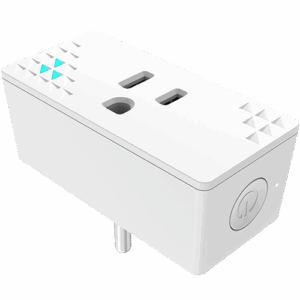MEET WIRELESS SENSING
The new standard for home security
Complete home security
with Wireless Sensing
Since the late 90s, wireless network (WiFi) technology has been used to transmit or transfer information without any form of physical connection or wire. Wireless Sensing takes this a step further in harnessing the power of wireless networks to detect and interpret motion and presence.
Through Wireless Sensing, nami sends out wireless signals, creating a distinct wireless network within the home. Just as a boat or jetty disrupts waves in the ocean, and leaves a distinct pattern, a moving person disrupts this network in a distinct way that nami is able to recognize.
nami's Intelligent Algorithm.
The Wireless Sensing technology in nami is fine-tuned to to identify human movement. By contrast, traditional home security systems are known to pick up any kind of motion and are therefore subject to constant false alarms. nami is empowered with sufficient intelligence to distinguish human motion from pets and other minor disturbances such as robot vacuum cleaners.


Privacy enhancing.
Wireless Sensing picks up and interprets motion without the need to record movement of identifiable people. Furthermore, the nami app does not collect or use personal data.
Non-Line of Sight.
Traditional home security relies on sensors which require a ‘clear line of sight’ in order to fully function. By contrast, Wireless Sensing works through walls and doors to pick up any motion which disturbs wireless signals.


Comprehensive coverage.
Traditional home security systems rely on multiple sensors at points of entry. This creates potential gaps in coverage. By contrast, nami creates a comprehensive 1,000 square feet motion detection network, meaning the entire area is covered.
Larger spaces are covered simply by adding an additional system.
Security assured.
Wireless Sensing means that nami secures the entire area with just two hardware components. This means few potential points of failure within the system.

FAQs
Traditional physical motion sensors rely on Passive InfraRed (PIR) sensors that detect body heat. One drawback of PIR sensors is that they only pick up movement within their “surveillance scope” or “line of sight”.
By contrast, Wireless Sensing picks up any movement within the overall ‘detection network’ and does not rely on “line of sight”.
Another drawback of PIR sensors is that they are relatively easy for an individual to trick my hiding their body heat (such as under a foil blanket).
Yes. Wireless waves are all around us, and are usually used to transfer information through the air (such as in wireless internet).
Wireless Sensing is another way of using that same technology. Instead of transmitting information through the waves, it picks up disturbances in the waves themselves which are caused by motion.
Yes. Wireless Sensing integrates seamlessly with camera surveillance via the nami app. This means that if a camera fails to detect an intruder, WiFi sensing acts as an effective failsafe.
In most cases, no. Wireless Sensing sensing only uses a small amount of bandwidth (measured in kilobytes per hour).
Wireless Sensing uses the power of a home wireless network to detect motion and protect your home.
Once plugged in, the nami system sends out wireless signals or waves. Wireless Sensing means that these waves are disturbed when motion is detected.


















